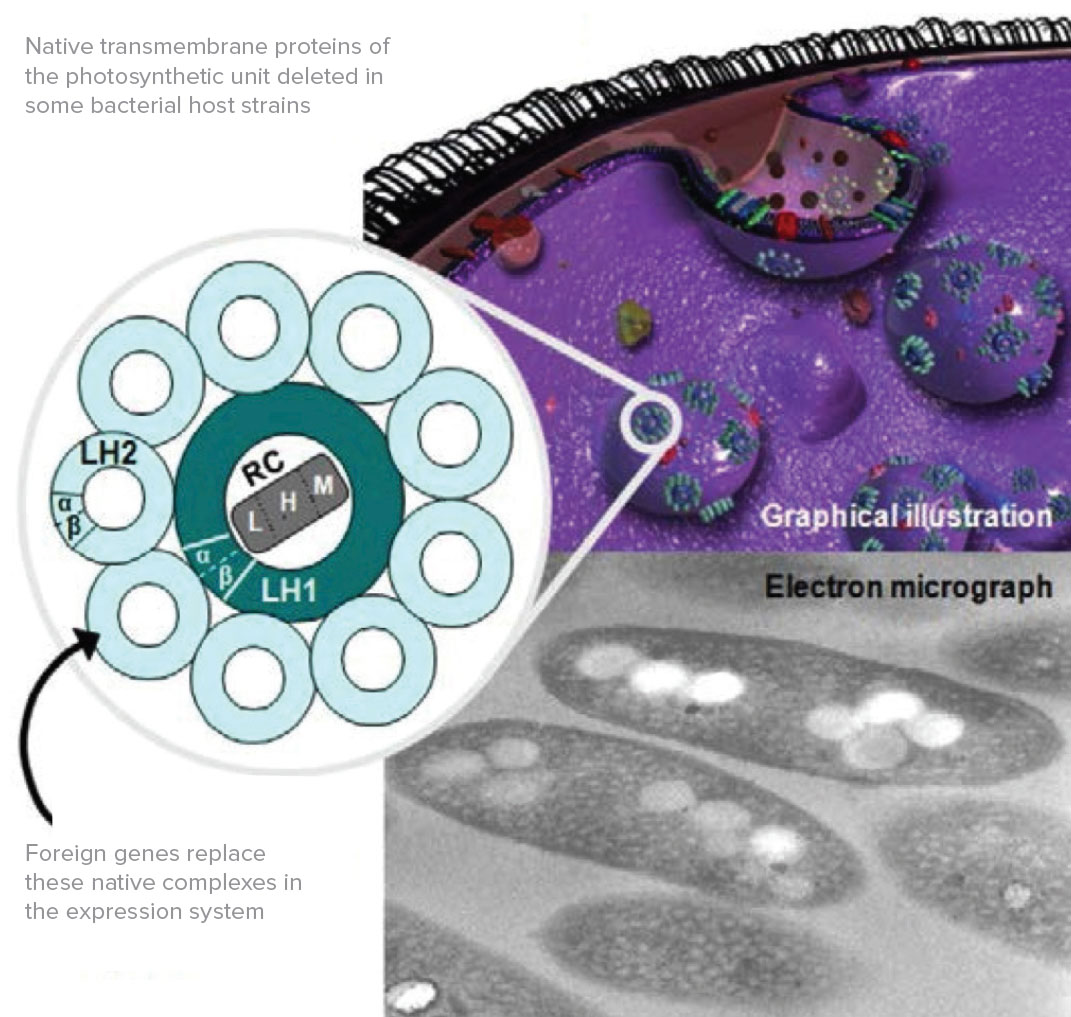- A System for Expression of Membrane Proteins (ANL-IN-06-099)
The Innovation
Cell membranes are the interface between an organism and its environment. These biological structures contain proteins that are extremely important for many cellular processes (e.g., nutrient uptake, metabolic waste excretion, energy metabolism, and response to external stimuli). Because of their mediating roles between external stimuli and internal cellular metabolism, membrane proteins account for more than 60% of drug targets.
Membrane proteins, however, present unique challenges because they are hydrophobic, which means they are highly unstable and insoluble in the aqueous environments typically used to produce and characterize hydrophilic proteins. It is therefore difficult to produce and purify them in quantities and at a level of quality sufficient for conducting structural or functional studies. That is also why the number of unique membrane protein structures determined to date lags far behind the number of those known for water-soluble proteins.
There are few available systems that enable heterologous expression of membrane proteins. Most were adapted from soluble protein expression systems and usually present challenges for research projects working on membrane proteins. For example, such systems using E. coli often produce insoluble aggregates or cause host toxicity as membrane space is limited. Alternatively, eukaryotic expression systems are costly and cumbersome to implement.
In contrast, a unique system for membrane protein expression invented by Philip Laible and Deborah Hanson in the Biosciences Division at Argonne National Laboratory makes it possible to obtain reasonable yields of functional membrane protein. This proprietary method uses photosynthetic bacteria (Rhodobacter) for the expression of heterologous membrane proteins.
Rhodobacter cells produce extremely large amounts of intracellular membrane when cultured under certain conditions.Synthesis of foreign (or native) membrane proteins and this intracellular membrane can be coordinated in these bacteria. Partial purification of the expressed membrane proteins is afforded because they are sequestered in these membrane vesicles, which are easily separated by size. Vesicles enriched in target membrane proteins can be used directly in many types of activity assays. Recently, work with the Rhodobacter expression system has become less cumbersome by additional engineering of strains that allow the direct uptake of foreign DNA (patent application pending). Previous methods used a two-step process: foreign DNA was first introduced into E. coli cells, which were then mated with Rhodobacter cells – mobilizing and transferring the foreign DNA by a process known as conjugation. Rhodobacter strains can now be manipulated using common laboratory methods (e.g., chemical or electroporetic transformation).
The Benefits
This method offers such advantages as lower production costs, ease of purification, scalability, and high yields of membrane proteins (0.5 mg/L to as high as 20 mg/L culture). The system permits the simultaneous production and sequestration of foreign membrane proteins, yielding a higher fraction of proteins in soluble form, as well as avoiding toxicity to the host. It has strong applications in both the pharmaceutical and biotechnology industries. As biologics become more mainstream, large quantities of active membrane proteins will be required for regulatory testing. Certain membrane proteins of therapeutic importance have been overexpressed with success, and research is under way to validate the method further for other classes of industrially relevant membrane proteins.
Application and Industries
- A research tool for expression of challenging proteins
- Scaled production for biologics testing and drug discovery efforts
Publication Information
P. D. Laible et al., J. Struct. Funct. Genomics 5: 167–172 (2004)
Developmental Stage
Ready for commercialization
